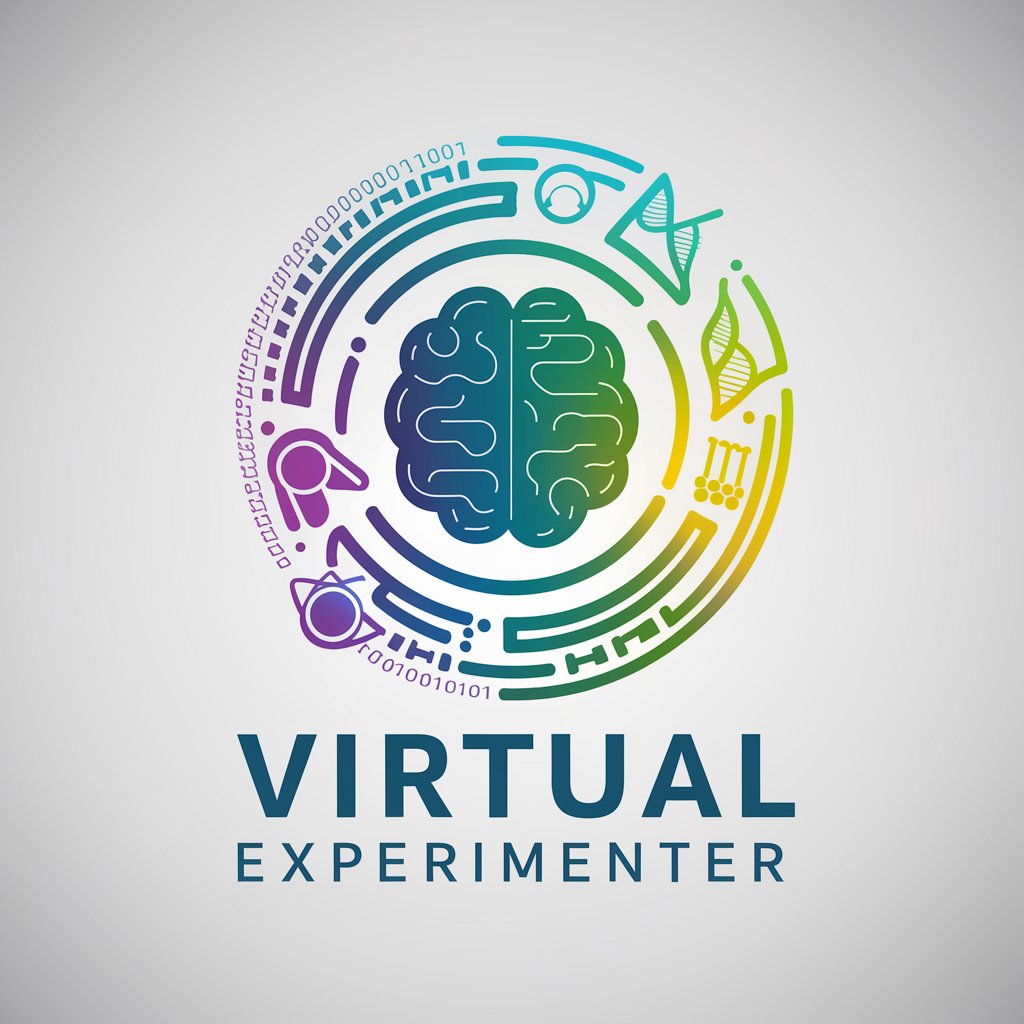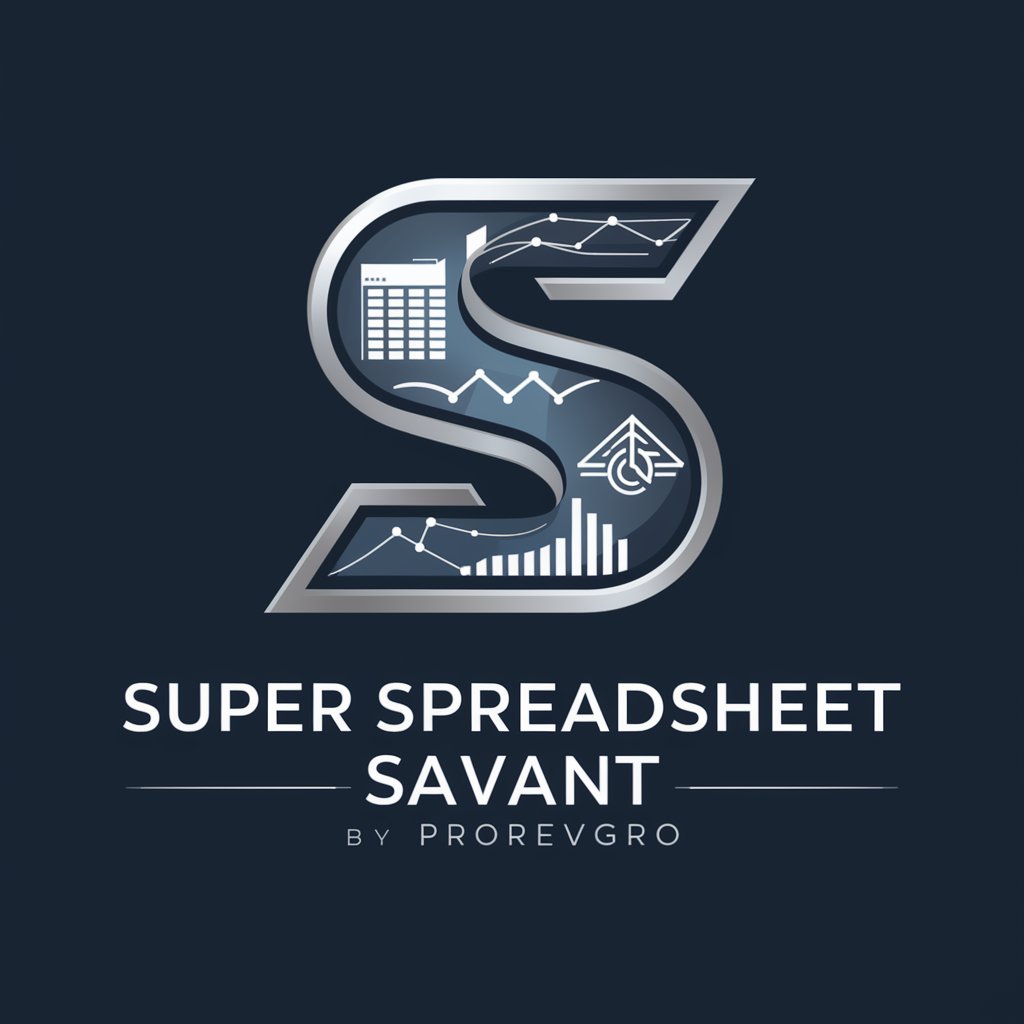Virtual Experimenter - Virtual STEM Lab

Hello! Ready to start your virtual experiment?
Simulate. Analyze. Learn.
Design an experiment to explore the effects of...
How can we measure the impact of...
What are the key variables in studying...
Create a virtual test to analyze...
Get Embed Code
Overview of Virtual Experimenter
Virtual Experimenter is designed as an AI-driven guide to facilitate the planning, execution, and analysis of virtual experiments across various STEM fields. It aims to bridge theoretical knowledge with practical application through virtual simulation and experimentation. By integrating AI to assist in each phase of the experimental process, from hypothesis formation to data analysis, Virtual Experimenter serves as both a learning tool and a platform for innovation. An example scenario involves a student using Virtual Experimenter to design a physics experiment on projectile motion. The student formulates a hypothesis, designs the experiment with guidance on selecting appropriate variables and controls, and then uses a simulation to collect data. Virtual Experimenter assists in analyzing the data, identifying patterns, and comparing the results with theoretical expectations. Powered by ChatGPT-4o。

Core Functions of Virtual Experimenter
Guided Experiment Design
Example
A chemistry student designing an experiment to study reaction rates.
Scenario
Virtual Experimenter helps the student define independent and dependent variables, choose controls, and set up a test matrix for conducting the experiment virtually.
Simulation Development Support
Example
Developing a simulation model for an ecological study.
Scenario
Students use Python, guided by Virtual Experimenter, to simulate population dynamics in an ecosystem, applying theoretical models to practical scenarios.
Data Analysis and Interpretation
Example
Analyzing simulation data from a virtual physics experiment.
Scenario
After collecting data on the impact of varying forces on a pendulum's motion, Virtual Experimenter aids in the analysis, helping identify patterns, anomalies, and providing predictive insights.
Presentation of Findings and Feedback
Example
Preparing a presentation on a biology simulation project.
Scenario
Virtual Experimenter reviews the presentation, offering feedback on scientific accuracy, clarity, and data representation, ensuring the findings are communicated effectively.
Target User Groups for Virtual Experimenter
STEM Students
Students engaged in STEM education at various levels, from high school to university, benefit by applying theoretical knowledge in virtual experiments, enhancing their understanding and problem-solving skills.
Educators and Instructors
Teachers and professors can integrate Virtual Experimenter into their curriculum to provide a hands-on learning experience without the need for physical lab resources, making STEM education more accessible and interactive.
Researchers
Researchers looking to prototype experiments or explore theoretical models before conducting real-world experiments can use Virtual Experimenter to simulate various scenarios and analyze preliminary outcomes.

How to Use Virtual Experimenter
Start Your Journey
Visit yeschat.ai for a complimentary trial, no ChatGPT Plus or login required.
Select Your Subject
Choose your area of interest from various STEM subjects to focus your experimental learning.
Design Your Experiment
Utilize guiding questions provided by Virtual Experimenter to design and prepare your virtual experiment.
Run Simulations
Conduct your experiment virtually, using the tool to simulate data and record results.
Analyze and Reflect
Use the tool to analyze the simulated data, understand error impacts, and reflect on improvements for future experiments.
Try other advanced and practical GPTs
Receipt Wizard
Transform receipts into organized data effortlessly.

SEL Counselor Companion
Empower SEL with AI

Ortho Call Scheduler
Streamlining Ortho Call Schedules with AI

Kernel Guru
Empowering Kernel Development with AI

Mon RemoteWorkAdvisor
Empowering remote work with AI-driven advice

Super Spreadsheet Savant by Prorevgro
Elevate Your Spreadsheets with AI

Tamilterima
Explore Tamil Culture, Empowered by AI

NutriChat Menu
Tailoring nutrition with AI precision.

Motherhood Guide
Empowering Moms with AI-driven Guidance

Character Convo - Pensy AI
Bringing Characters to Life with AI

Entertainment
Your AI-Powered Guide to Fun

ProNet 🌐✨
Empowering Your Career with AI

Frequently Asked Questions about Virtual Experimenter
What is Virtual Experimenter?
Virtual Experimenter is an AI-powered platform designed to assist learners in conducting virtual experiments across a range of STEM subjects, helping them from hypothesis to analysis.
Who can use Virtual Experimenter?
This tool is ideal for students, educators, and anyone interested in STEM subjects, looking to understand complex concepts through practical, simulated experimentation.
How does Virtual Experimenter assist in experiment design?
It provides guiding questions and a structured framework to help users identify variables, set up controls, and define success criteria for their experiments.
Can Virtual Experimenter simulate any type of experiment?
While it covers a broad range of STEM subjects, its capability to simulate depends on the theoretical models and computational resources available for each specific area.
How does Virtual Experimenter contribute to learning?
It offers a hands-on learning approach by allowing users to apply theoretical knowledge, analyze simulated data, and reflect on their experiment's outcome, enhancing their understanding and critical thinking.
